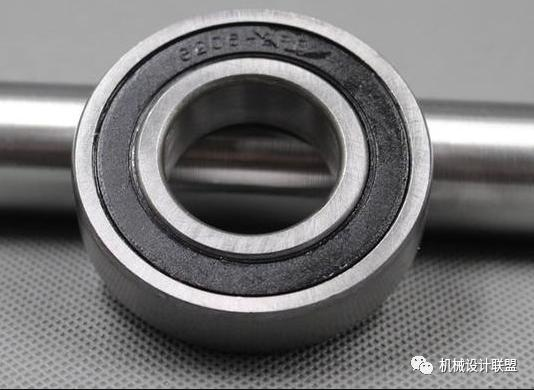1、 Bearing fit
Bearing fits are generally transition fits, but interference fits are optional in special cases, but few. Because the bearing and shaft are matched by the inner ring and shaft of the bearing, and the base hole system is used, the bearing should be completely zero. We can also think so in practical use. However, in order to prevent the inner ring rolling and damaging the G surface of the shaft when the bearing inner ring is matched with the minimum limit size of the shaft, our bearing inner rings have 0 to several μ The lower deviation tolerance is used to ensure that the inner ring does not rotate, so the bearing generally selects the transition fit. Even if the transition fit is selected, it cannot exceed the interference of 3 wires.
Generally, the matching accuracy grade is grade 6. Sometimes it depends on the material and processing technology. Theoretically, Grade 7 is a little low, and grinding is required for Grade 5 matching.
The general selection is: the matching of bearing inner ring and shaft is K6, and the matching hole of bearing outer ring and hole is K6 or K7
2、 Fit tolerance standard of bearing and shaft
1. When the bearing inner diameter tolerance zone forms a fit with the shaft tolerance zone, the tolerance code of the original transition fit in the general base hole system will become an over win fit, such as K5, K6, M5, M6, N6, etc., but the over win amount is small; When the inner diameter tolerance of the bearing forms a fit with H5, H6, G5, G6, etc., it is no longer a clearance but an over win fit.
2. Bearing outer diameter tolerance zone is also a special tolerance zone because the tolerance value is different from the general reference shaft. In most cases, the outer ring is fixed in the shell hole, and some bearing components need to be adjusted according to the structural requirements. Its fit should not be too tight, and it often fits with H6, H7, J6, J7, js6, js7, etc.
3、 Examples
Generally, the shaft is generally marked with 0 ~ + 0.005. If it is not disassembled frequently, it is an interference fit of + 0.005 ~ + 0.01. If it is to be disassembled frequently, it is a transition fit. We should also take into account the thermal expansion of the shaft material itself during rotation, so the larger the bearing is, the better is the clearance fit of - 0.005 ~ 0, and the maximum clearance fit should not exceed 0.01. Another is the interference of the moving coil and the clearance of the stationary coil.
4、 Fit tolerance
It refers to the sum of hole and shaft tolerances that make up the fit. It is the variation of allowable clearance or interference. The size and position of the tolerance zone of the hole and shaft constitute the fit tolerance. The size of hole and shaft fit tolerance indicates the fit accuracy of hole and shaft. The size and position of the hole and shaft fit tolerance zone represent the fit accuracy and fit nature of the hole and shaft. Size of fit tolerance = size of tolerance zone; Fit tolerance zone size and location = fit nature.
5、 Selection of tolerance grade
The tolerance grade of the shaft or bearing seat hole matched with the bearing is related to the bearing accuracy. The tolerance grade of shaft matched with P0 precision bearing is generally IT6, and the bearing seat hole is generally it7. Where there are high requirements for the stability of the rotary precision yard (such as motor), the shaft should be it5 and the bearing seat hole should be IT6.
6、 Selection of tolerance zone
The equivalent radial load p is divided into "light", "normal" and "heavy" loads. Its relationship with the rated dynamic load C of the bearing is as follows: light load P ≤ 0.06c, normal load 0.06c < P ≤ 0.12c, heavy load 0.12c < P
1. Shaft tolerance zone
For the tolerance zone of the shaft installed with radial bearing and angular contact bearing, refer to the corresponding tolerance zone table. In most cases, when the shaft rotates and the radial load direction remains unchanged, that is, when the bearing inner ring rotates relative to the load direction, transition or interference fit should be selected. When the shaft is stationary and the radial load direction remains unchanged, that is, when the bearing inner ring is stationary relative to the load direction, transition or small clearance fit can be selected (too large clearance is not allowed).
2. Housing hole tolerance zone
The tolerance zone of housing hole for installing radial bearing and angular contact bearing shall refer to the corresponding tolerance zone table. When selecting, pay attention to avoid clearance fit for the outer ring swinging or rotating in the load direction. The size of equivalent radial load also affects the matching selection of outer ring.
3. Selection of structural form of bearing pedestal
Unless there are special needs, the bearing seat of rolling bearing generally adopts the integral structure. The split bearing seat is only used when it is difficult to assemble or when the advantage of convenient assembly becomes the main consideration point. However, it cannot be applied to tight fit or more precise fit, such as K7 and tighter fit than K7, and split bearing seat shall not be used for seat holes with tolerance grade of IT6 or more.







